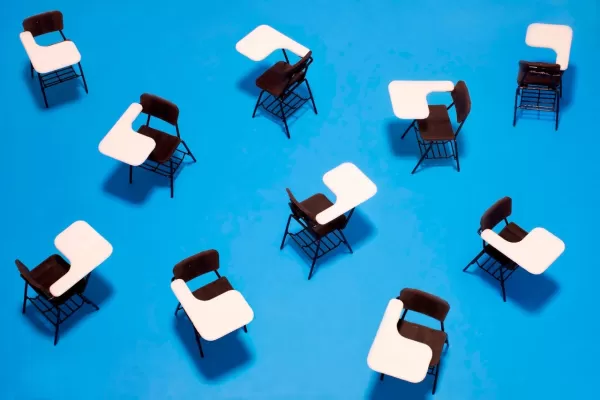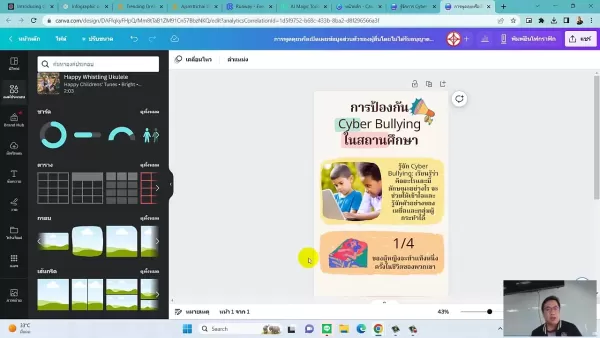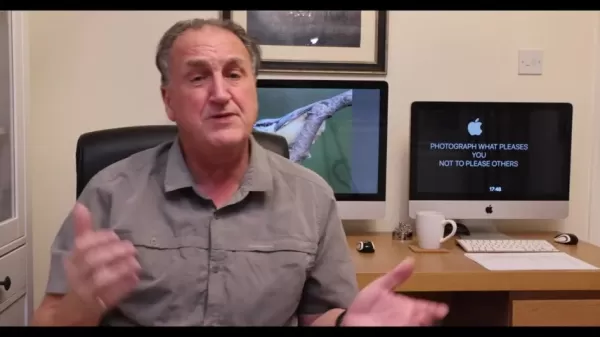OpenAI's New AI Detection Tool: A Game-Changer in Preventing Student Cheating?

According to a survey by BestColleges, over half of students are turning to AI as a shortcut to academic success. This aligns with a Stanford University study that found between 60 to 70 percent of students resort to cheating. However, the days of effortlessly using AI like ChatGPT to write essays might be numbered. A Wall Street Journal article highlights that OpenAI claims to have developed a method to detect AI-generated content with a staggering 99.9% accuracy.
My colleague David Gewirtz has noted that several programs already claim to spot AI-written text. Yet, he remains skeptical, stating, "I certainly wouldn't feel comfortable threatening a student's academic standing or accusing them of cheating based on the results of these tools."
OpenAI hasn't spilled the beans on how their method achieves such near-perfect detection. It's not about catching AI's tendency to "hallucinate" or produce false information, as OpenAI co-founder John Schulman admitted last year, "Our biggest concern was around factuality because the model likes to fabricate things."
Mohamed Elgendy, co-founder and CEO of Kolena, a machine learning testing service, believes that while AI's hallucination rate may decrease, it will never disappear entirely. He compares it to even the most educated individuals occasionally spreading misinformation.
Rather than relying on some mysterious deep tech, OpenAI seems to be using a straightforward approach: watermarking. In a recently updated blog post titled "Understanding the source of what we see and hear online," OpenAI mentions exploring classifiers, watermarking, and metadata to identify AI-generated content. The exact mechanics of this watermarking remain under wraps.
OpenAI claims this method has proven highly accurate and resilient against localized tampering like paraphrasing. However, it struggles with globalized tampering, such as translated text or inserting and then deleting special characters. Moreover, it's not designed to detect content produced by other AI models, like Google Gemini or Perplexity.
In essence, with a bit more effort, students and writers might still be able to sneak AI-generated work past detectors. From my own experience, AI-produced content often feels second-rate, but for some, a passing grade might be all that's needed.
A self-proclaimed professor on Reddit isn't convinced, stating, "The problem is that you can just copy-paste the text into another program, translate it into another language, and then translate it back. But honestly, most students aren't going to do that, so it would catch pretty much everyone."
OpenAI CEO Sam Altman seems less concerned about academic cheating, telling The Harvard Gazette, "Cheating on homework is obviously bad. But what we mean by cheating and what the expected rules are does change over time."
I'm not sure I agree with that perspective. Cheating is cheating, and this new tool from OpenAI doesn't seem like it will make a significant dent in the problem.
Interestingly, while OpenAI debates the release of this text detection service, they're moving forward with a DALL·E 3 provenance classifier. Soon, nearly every image created with DALL-E will be tagged as AI-generated, using C2PA metadata. If you're a graphic designer who's been leaning on DALL-E for "original" graphics, it might be time to brush up on your Photoshop skills.
Related article
 Best AI Tools for Creating Educational Infographics – Design Tips & Techniques
In today's digitally-driven educational landscape, infographics have emerged as a transformative communication medium that converts complex information into visually appealing, easily understandable formats. AI technology is revolutionizing how educa
Best AI Tools for Creating Educational Infographics – Design Tips & Techniques
In today's digitally-driven educational landscape, infographics have emerged as a transformative communication medium that converts complex information into visually appealing, easily understandable formats. AI technology is revolutionizing how educa
 Topaz DeNoise AI: Best Noise Reduction Tool in 2025 – Full Guide
In the competitive world of digital photography, image clarity remains paramount. Photographers at all skill levels contend with digital noise that compromises otherwise excellent shots. Topaz DeNoise AI emerges as a cutting-edge solution, harnessing
Topaz DeNoise AI: Best Noise Reduction Tool in 2025 – Full Guide
In the competitive world of digital photography, image clarity remains paramount. Photographers at all skill levels contend with digital noise that compromises otherwise excellent shots. Topaz DeNoise AI emerges as a cutting-edge solution, harnessing
 Master Emerald Kaizo Nuzlocke: Ultimate Survival & Strategy Guide
Emerald Kaizo stands as one of the most formidable Pokémon ROM hacks ever conceived. While attempting a Nuzlocke run exponentially increases the challenge, victory remains achievable through meticulous planning and strategic execution. This definitiv
Comments (5)
0/200
Master Emerald Kaizo Nuzlocke: Ultimate Survival & Strategy Guide
Emerald Kaizo stands as one of the most formidable Pokémon ROM hacks ever conceived. While attempting a Nuzlocke run exponentially increases the challenge, victory remains achievable through meticulous planning and strategic execution. This definitiv
Comments (5)
0/200
![AnthonyHernández]() AnthonyHernández
AnthonyHernández
 April 24, 2025 at 8:20:51 PM EDT
April 24, 2025 at 8:20:51 PM EDT
오픈AI의 이 AI 탐지 도구는 학생들이 AI를 이용해 부정행위를 하는 것을 막는 데 정말 도움이 됩니다. 완벽하지는 않지만, 꽤 정확해요. 교육 관계자라면 꼭 시도해보세요. 다만, 좀 더 일찍 나왔으면 좋겠네요 😂📚


 0
0
![NicholasThomas]() NicholasThomas
NicholasThomas
 April 24, 2025 at 1:43:04 PM EDT
April 24, 2025 at 1:43:04 PM EDT
This AI detection tool from OpenAI is a lifesaver for teachers! It's so hard to keep up with students using AI to cheat. This tool seems to catch most of it, but it's not perfect. Still, it's a huge step forward in maintaining academic integrity. Anyone in education should give it a try! 🤓📚


 0
0
![EricJohnson]() EricJohnson
EricJohnson
 April 23, 2025 at 10:17:46 PM EDT
April 23, 2025 at 10:17:46 PM EDT
このOpenAIのAI検出ツールは、学生がAIを使ってカンニングするのを防ぐのに本当に役立ちます。完全ではありませんが、かなり正確です。教育関係者にはぜひ試してみてほしいです。ただ、もっと早く出てきてほしかったですね😅📚


 0
0
![BrianThomas]() BrianThomas
BrianThomas
 April 23, 2025 at 9:45:13 PM EDT
April 23, 2025 at 9:45:13 PM EDT
A ferramenta de detecção de AI da OpenAI é um divisor de águas para os professores! É tão difícil acompanhar os alunos usando AI para trapacear. Esta ferramenta parece pegar a maioria, mas não é perfeita. Ainda assim, é um grande passo para manter a integridade acadêmica. Qualquer um na educação deveria experimentar! 🤓📚


 0
0
![PaulTaylor]() PaulTaylor
PaulTaylor
 April 23, 2025 at 8:25:23 PM EDT
April 23, 2025 at 8:25:23 PM EDT
¡Esta herramienta de detección de AI de OpenAI es un salvavidas para los profesores! Es tan difícil seguirle el paso a los estudiantes que usan AI para hacer trampa. Esta herramienta parece capturar la mayoría, pero no es perfecta. Aún así, es un gran avance para mantener la integridad académica. ¡Cualquiera en educación debería probarla! 🤓📚


 0
0

According to a survey by BestColleges, over half of students are turning to AI as a shortcut to academic success. This aligns with a Stanford University study that found between 60 to 70 percent of students resort to cheating. However, the days of effortlessly using AI like ChatGPT to write essays might be numbered. A Wall Street Journal article highlights that OpenAI claims to have developed a method to detect AI-generated content with a staggering 99.9% accuracy.
My colleague David Gewirtz has noted that several programs already claim to spot AI-written text. Yet, he remains skeptical, stating, "I certainly wouldn't feel comfortable threatening a student's academic standing or accusing them of cheating based on the results of these tools."
OpenAI hasn't spilled the beans on how their method achieves such near-perfect detection. It's not about catching AI's tendency to "hallucinate" or produce false information, as OpenAI co-founder John Schulman admitted last year, "Our biggest concern was around factuality because the model likes to fabricate things."
Mohamed Elgendy, co-founder and CEO of Kolena, a machine learning testing service, believes that while AI's hallucination rate may decrease, it will never disappear entirely. He compares it to even the most educated individuals occasionally spreading misinformation.
Rather than relying on some mysterious deep tech, OpenAI seems to be using a straightforward approach: watermarking. In a recently updated blog post titled "Understanding the source of what we see and hear online," OpenAI mentions exploring classifiers, watermarking, and metadata to identify AI-generated content. The exact mechanics of this watermarking remain under wraps.
OpenAI claims this method has proven highly accurate and resilient against localized tampering like paraphrasing. However, it struggles with globalized tampering, such as translated text or inserting and then deleting special characters. Moreover, it's not designed to detect content produced by other AI models, like Google Gemini or Perplexity.
In essence, with a bit more effort, students and writers might still be able to sneak AI-generated work past detectors. From my own experience, AI-produced content often feels second-rate, but for some, a passing grade might be all that's needed.
A self-proclaimed professor on Reddit isn't convinced, stating, "The problem is that you can just copy-paste the text into another program, translate it into another language, and then translate it back. But honestly, most students aren't going to do that, so it would catch pretty much everyone."
OpenAI CEO Sam Altman seems less concerned about academic cheating, telling The Harvard Gazette, "Cheating on homework is obviously bad. But what we mean by cheating and what the expected rules are does change over time."
I'm not sure I agree with that perspective. Cheating is cheating, and this new tool from OpenAI doesn't seem like it will make a significant dent in the problem.
Interestingly, while OpenAI debates the release of this text detection service, they're moving forward with a DALL·E 3 provenance classifier. Soon, nearly every image created with DALL-E will be tagged as AI-generated, using C2PA metadata. If you're a graphic designer who's been leaning on DALL-E for "original" graphics, it might be time to brush up on your Photoshop skills.
 Best AI Tools for Creating Educational Infographics – Design Tips & Techniques
In today's digitally-driven educational landscape, infographics have emerged as a transformative communication medium that converts complex information into visually appealing, easily understandable formats. AI technology is revolutionizing how educa
Best AI Tools for Creating Educational Infographics – Design Tips & Techniques
In today's digitally-driven educational landscape, infographics have emerged as a transformative communication medium that converts complex information into visually appealing, easily understandable formats. AI technology is revolutionizing how educa
 Topaz DeNoise AI: Best Noise Reduction Tool in 2025 – Full Guide
In the competitive world of digital photography, image clarity remains paramount. Photographers at all skill levels contend with digital noise that compromises otherwise excellent shots. Topaz DeNoise AI emerges as a cutting-edge solution, harnessing
Topaz DeNoise AI: Best Noise Reduction Tool in 2025 – Full Guide
In the competitive world of digital photography, image clarity remains paramount. Photographers at all skill levels contend with digital noise that compromises otherwise excellent shots. Topaz DeNoise AI emerges as a cutting-edge solution, harnessing
 Master Emerald Kaizo Nuzlocke: Ultimate Survival & Strategy Guide
Emerald Kaizo stands as one of the most formidable Pokémon ROM hacks ever conceived. While attempting a Nuzlocke run exponentially increases the challenge, victory remains achievable through meticulous planning and strategic execution. This definitiv
Master Emerald Kaizo Nuzlocke: Ultimate Survival & Strategy Guide
Emerald Kaizo stands as one of the most formidable Pokémon ROM hacks ever conceived. While attempting a Nuzlocke run exponentially increases the challenge, victory remains achievable through meticulous planning and strategic execution. This definitiv
 April 24, 2025 at 8:20:51 PM EDT
April 24, 2025 at 8:20:51 PM EDT
오픈AI의 이 AI 탐지 도구는 학생들이 AI를 이용해 부정행위를 하는 것을 막는 데 정말 도움이 됩니다. 완벽하지는 않지만, 꽤 정확해요. 교육 관계자라면 꼭 시도해보세요. 다만, 좀 더 일찍 나왔으면 좋겠네요 😂📚


 0
0
 April 24, 2025 at 1:43:04 PM EDT
April 24, 2025 at 1:43:04 PM EDT
This AI detection tool from OpenAI is a lifesaver for teachers! It's so hard to keep up with students using AI to cheat. This tool seems to catch most of it, but it's not perfect. Still, it's a huge step forward in maintaining academic integrity. Anyone in education should give it a try! 🤓📚


 0
0
 April 23, 2025 at 10:17:46 PM EDT
April 23, 2025 at 10:17:46 PM EDT
このOpenAIのAI検出ツールは、学生がAIを使ってカンニングするのを防ぐのに本当に役立ちます。完全ではありませんが、かなり正確です。教育関係者にはぜひ試してみてほしいです。ただ、もっと早く出てきてほしかったですね😅📚


 0
0
 April 23, 2025 at 9:45:13 PM EDT
April 23, 2025 at 9:45:13 PM EDT
A ferramenta de detecção de AI da OpenAI é um divisor de águas para os professores! É tão difícil acompanhar os alunos usando AI para trapacear. Esta ferramenta parece pegar a maioria, mas não é perfeita. Ainda assim, é um grande passo para manter a integridade acadêmica. Qualquer um na educação deveria experimentar! 🤓📚


 0
0
 April 23, 2025 at 8:25:23 PM EDT
April 23, 2025 at 8:25:23 PM EDT
¡Esta herramienta de detección de AI de OpenAI es un salvavidas para los profesores! Es tan difícil seguirle el paso a los estudiantes que usan AI para hacer trampa. Esta herramienta parece capturar la mayoría, pero no es perfecta. Aún así, es un gran avance para mantener la integridad académica. ¡Cualquiera en educación debería probarla! 🤓📚


 0
0





























